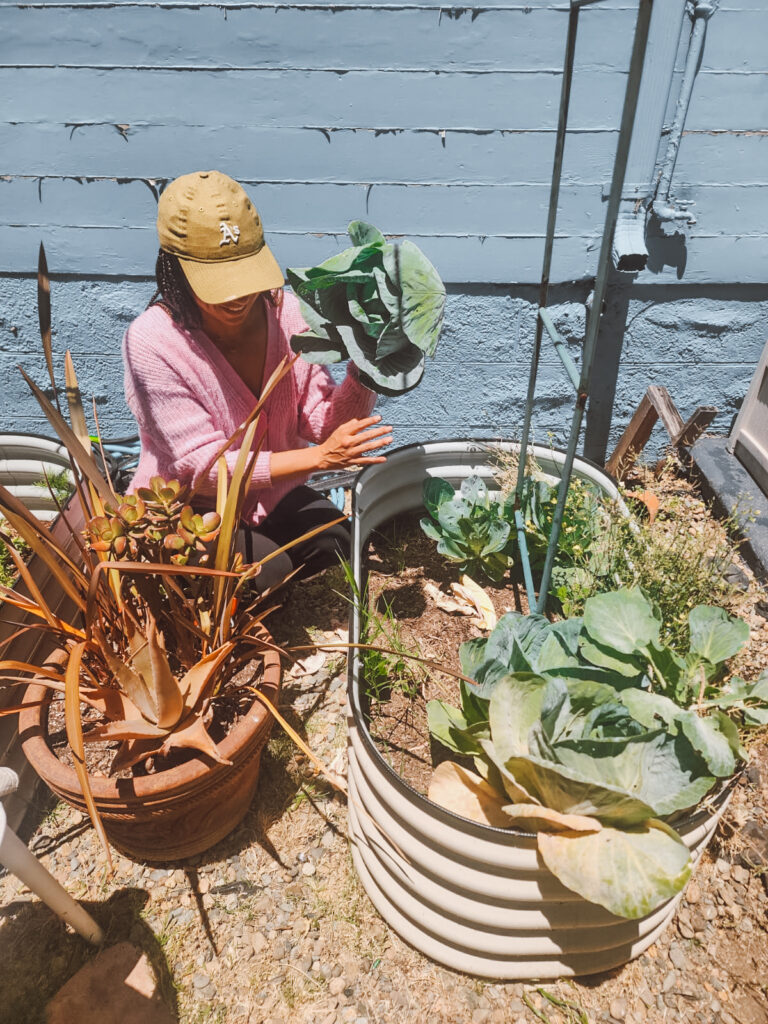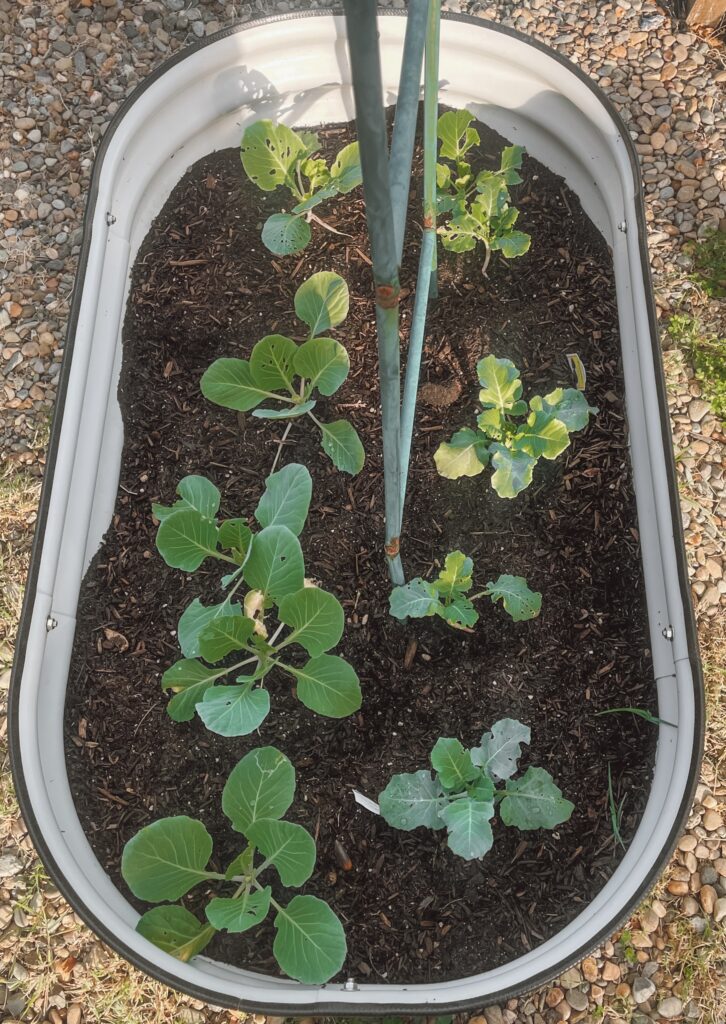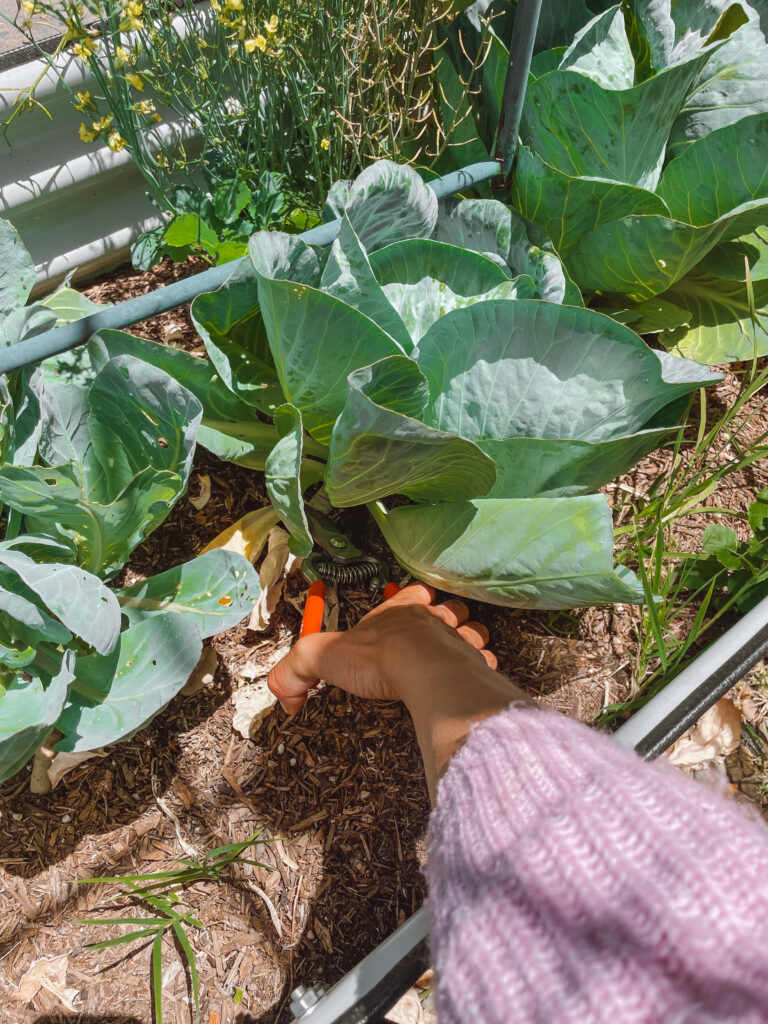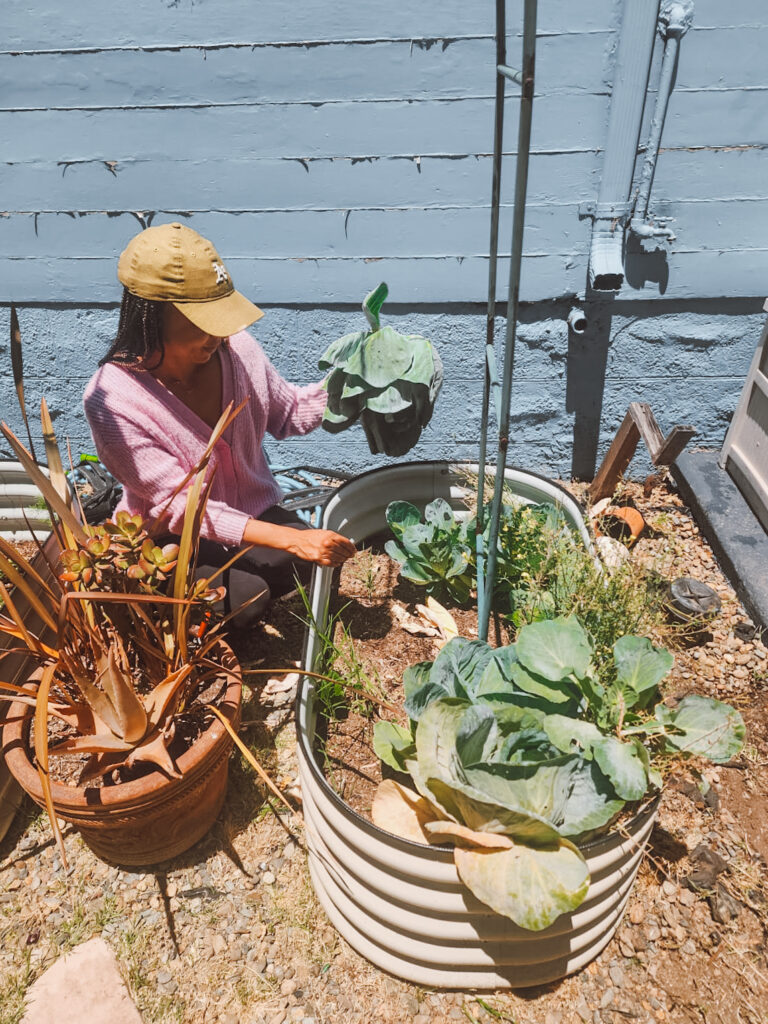
I recently harvested a couple of heads of cabbage from my raised garden bed after a few months of growth, and wanted to share a quick overview of the process for anyone interested in adding cabbage to their garden.

Timing & Planting
These cabbage plants were started from seedlings and took about 75–90 days to reach maturity. I planted them in a raised bed with full sun exposure and used a mix of compost, organic potting soil, and mulch to help with drainage and moisture retention. Cabbage is a cool-season crop, so I started them in early spring, but fall is another good window for planting.
Care
Cabbage needs consistent watering—enough to reach the roots, but not so much that the soil stays soggy. I watered about 2–3 times a week depending on the weather, and kept an eye out for any outer leaves that yellowed or showed signs of stress. Mulch helped regulate soil temperature and kept weeds down.
Pest Management
I noticed a few common pests—mostly cabbage worms and the occasional slug. Hand-picking, neem oil spray, and crushed eggshells around the base were enough to keep things manageable. If you’re growing in a smaller bed like this one, checking for damage early really helps.

Harvesting
Once the heads felt firm to the touch and had reached a solid size, I used garden shears to cut them just above the soil. It’s best to harvest in the morning when the leaves are still crisp. Even after cutting, I left the outer leaves and root system in place to decompose back into the soil.

Takeaway
Cabbage is a rewarding plant to grow—low-maintenance once established, and surprisingly resilient even in small garden setups. If you’re looking to grow something fresh and hearty, this is a great option to start with.
Leave a Reply